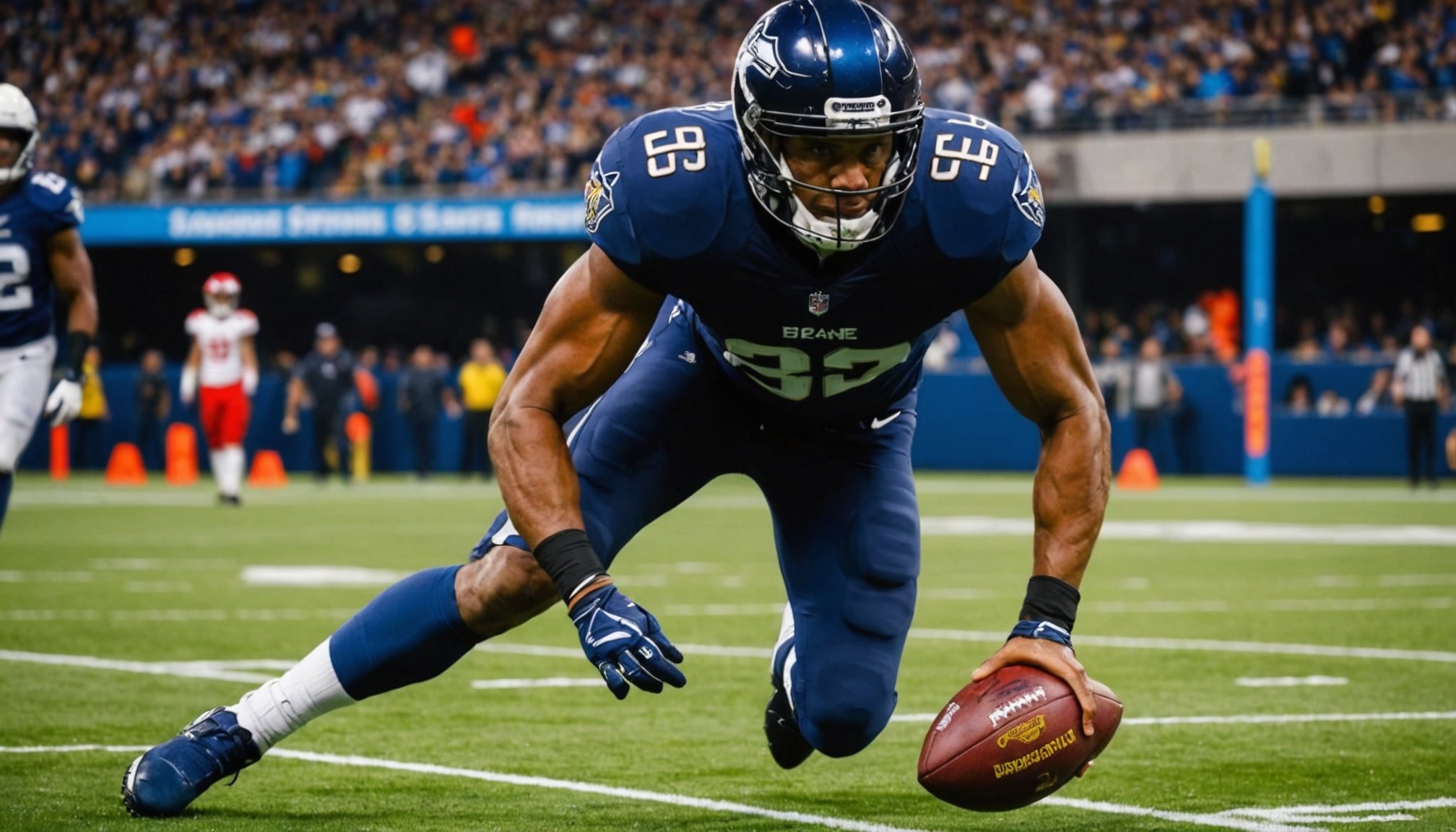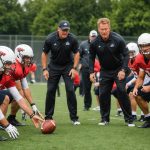Revitalizing Your Game: Essential Fitness Hacks for Football Players Navigating Injury Recovery
Understanding the Importance of Injury Recovery
When you’re a football player, injuries are an unfortunate but common part of the game. Whether you’re dealing with a minor sprain or a more serious condition like a torn ligament, the road to recovery is crucial for getting back on the field at full strength. Injury recovery is not just about healing the physical aspect; it also involves maintaining your mental health and overall fitness level.
“Injury recovery is a holistic process. It’s not just about fixing the physical issue, but also about keeping your mind and body in top shape,” says Dr. Jane Smith, a sports medicine specialist. “A well-structured recovery plan can make all the difference in how quickly and effectively you can return to your game.”
Creating a Comprehensive Recovery Plan
A comprehensive recovery plan involves several key components, each designed to address different aspects of your health and fitness.
Physical Rehabilitation
Physical rehabilitation is the cornerstone of any injury recovery plan. This includes a series of exercises and therapies aimed at restoring strength, flexibility, and mobility to the affected area.
This might interest you : Crucial legal protections every uk football player should know for successful contract negotiations
- Low-Impact Exercises: Start with low-impact exercises such as cycling, swimming, or using an elliptical machine. These activities help maintain cardiovascular fitness without putting excessive strain on the injured area.
- Strength Training: Incorporate strength training exercises that target the muscles around the injury. For example, if you have a knee injury, focus on strengthening your quadriceps and hamstrings.
- Flexibility and Mobility: Incorporate stretching and mobility exercises to improve range of motion and reduce stiffness.
| Exercise Type | Benefits | Examples |
|---|---|---|
| Low-Impact | Maintains cardiovascular fitness without high impact | Cycling, Swimming, Elliptical Machine |
| Strength Training | Enhances muscle strength around the injured area | Squats, Lunges, Leg Press |
| Flexibility and Mobility | Improves range of motion and reduces stiffness | Leg Swings, Knee Bends, Hamstring Stretches |
Mental Health and Mind-Body Connection
Mental health is often overlooked in the recovery process, but it is equally important. Here are some strategies to keep your mind strong:
- Meditation and Mindfulness: Practices like meditation and mindfulness can help reduce stress and improve focus.
- Positive Self-Talk: Maintain a positive mindset by using affirmations and positive self-talk.
- Support Network: Surround yourself with a supportive network of family, friends, and teammates.
“Mental health is crucial during injury recovery. It helps you stay motivated and focused on your goals,” advises Dr. John Doe, a sports psychologist.
Nutrition and Meal Planning
Proper nutrition is essential for healing and maintaining your overall health. Here are some tips for creating an effective meal plan:
Balanced Diet
Ensure your diet includes a balance of proteins, carbohydrates, and healthy fats.
- Proteins: Essential for muscle repair and growth. Include sources like lean meats, fish, eggs, and plant-based options.
- Carbohydrates: Provide energy for workouts and daily activities. Opt for complex carbs like whole grains, fruits, and vegetables.
- Healthy Fats: Support overall health and provide energy. Include sources like nuts, seeds, avocados, and olive oil.
Hydration
Stay hydrated by drinking plenty of water throughout the day. Aim for at least 8-10 glasses of water daily.
Supplements
Consider adding supplements that support recovery, such as protein shakes, creatine, and omega-3 fatty acids. However, always consult with a healthcare professional before adding any new supplements to your diet.
| Nutrient | Benefits | Food Sources |
|---|---|---|
| Proteins | Muscle repair and growth | Lean meats, fish, eggs, plant-based options |
| Carbohydrates | Energy for workouts and daily activities | Whole grains, fruits, vegetables |
| Healthy Fats | Overall health and energy | Nuts, seeds, avocados, olive oil |
Sleep and Rest
Adequate sleep and rest are critical for recovery. Here’s why:
Importance of Sleep
Sleep is when your body repairs and rebuilds tissues, including muscles. Aim for 7-9 hours of sleep each night.
Rest Days
Include rest days in your training routine to allow your body time to recover. This is especially important during the recovery phase.
“Sleep is the unsung hero of recovery. It’s when your body does the most work to heal and repair itself,” says Dr. Michael Johnson, a sleep specialist.
Home Care and Self-Care Strategies
Taking care of yourself at home is vital for a smooth recovery. Here are some strategies to incorporate into your daily routine:
Compression Gear
Wearing compression gear, such as compression socks or sleeves, can help improve blood circulation and reduce muscle soreness[1].
Ice and Heat Therapy
Use ice packs to reduce inflammation in the acute phase of injury, and heat therapy to promote blood flow and relaxation in the later stages.
Self-Care Routines
Incorporate self-care routines like foam rolling, stretching, and massage to maintain flexibility and reduce muscle tension.
Training Strategies for Injury Prevention
While recovering from an injury, it’s also important to think about strategies to prevent future injuries.
Interval Training
Interval training involves alternating between high-intensity and low-intensity exercises. This can help improve cardiovascular fitness without putting excessive strain on your body.
Strength Training
Regular strength training can help improve overall strength and resilience, reducing the risk of future injuries.
Flexibility and Mobility Exercises
Regularly incorporating flexibility and mobility exercises into your routine can help maintain range of motion and reduce the risk of injury.
Finding the Right Support
Having the right support system can make a significant difference in your recovery journey.
Healthcare Professionals
Work closely with healthcare professionals such as physical therapists, trainers, and doctors to get personalized advice and treatment.
Support Groups
Join support groups or online communities where you can connect with other athletes going through similar experiences.
Family and Friends
Lean on your family and friends for emotional support. Having a strong support network can help you stay motivated and focused.
Practical Insights and Actionable Advice
Here are some practical tips to help you navigate your injury recovery:
- Stay Positive: Keep a positive mindset by focusing on your goals and the progress you’re making.
- Stay Active: Even if you can’t perform your usual workouts, stay active with low-impact exercises to maintain fitness.
- Listen to Your Body: Don’t push yourself too hard. Listen to your body and take rest days when needed.
- Eat Well: Follow a balanced meal plan that supports your recovery.
- Sleep Well: Ensure you get adequate sleep each night to aid in the healing process.
Recovering from an injury as a football player is a challenging but manageable process. By focusing on physical rehabilitation, mental health, nutrition, sleep, and self-care, you can ensure a smooth and effective recovery. Remember to stay positive, stay active, and listen to your body throughout the process.
“Injury recovery is a journey, not a destination. With the right strategies and support, you can come back stronger and more resilient than ever,” concludes Dr. Jane Smith.
By incorporating these essential fitness hacks into your routine, you’ll be back on the field in no time, ready to give your best performance.











